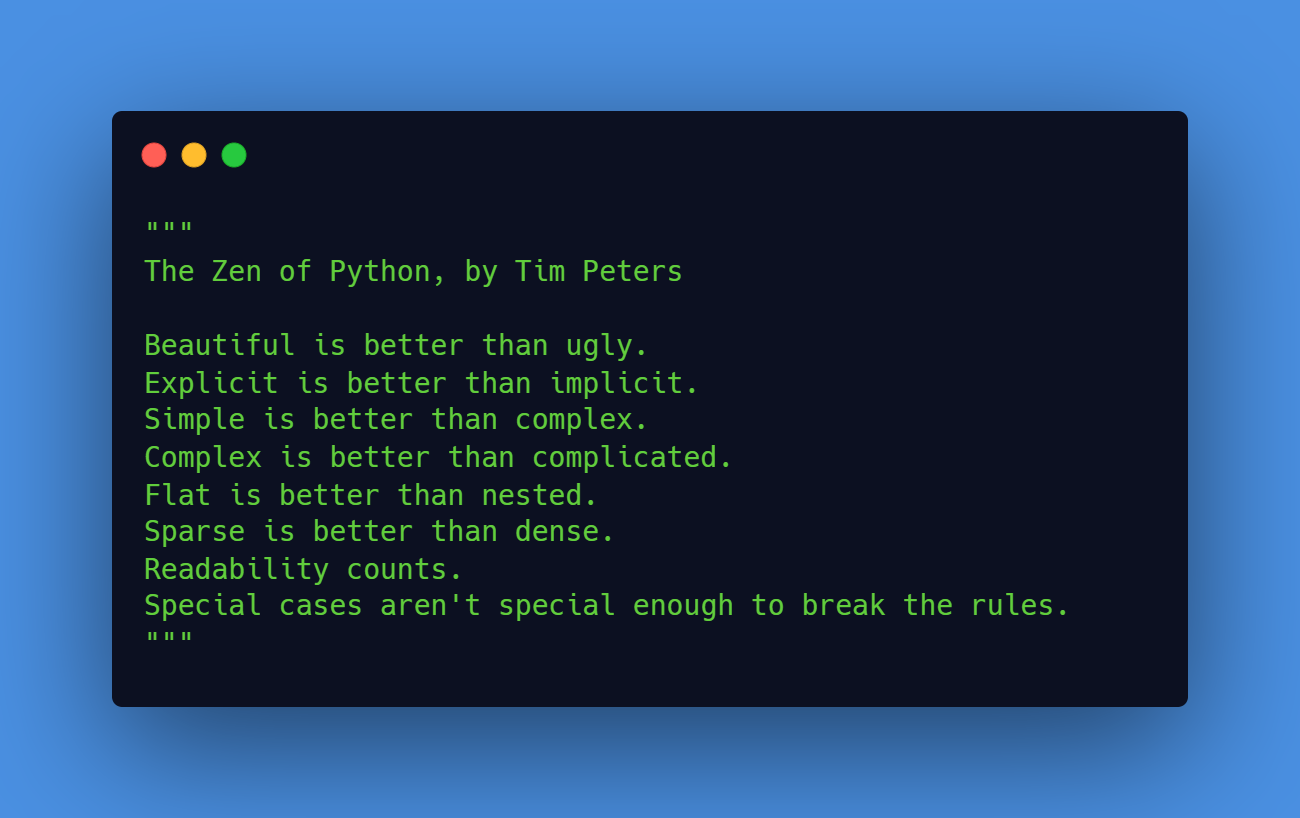First, it is important to determine exactly what characters you are talking about when you think of “special characters” because it will depend a lot on your use-case.
Do you mean all non-alphanumeric characters? And if so, what about non-English alphanumeric characters such as 你 (Chinese) or á (Spanish)? What about whitespace characters such as spaces and newlines?
Below, I will show three different methods for removing special characters from a string in Python and try to cover each of the different scenarios above.
Method 1: Using Regular Expressions
One common method for removing special characters from a string is to use Python’s re module and a regular expression pattern. Regular expressions, also known as regex, allow you to specify a pattern to search for in a string. You can then use the sub() function to replace the matched pattern with a specified string.
To remove all special characters from a string, you can use the following code:
import re
def remove_special_characters(string):
return re.sub(r'[\W_]', '', string)
Code language: Python (python)This regular expression pattern [\W\S_] searches for any character that is a non-word character (meaning a non-alphanumeric character) or an underscore (since \W doesn’t match underscores for some reason).
The sub() function then replaces the matched characters with an empty string, effectively removing them from the original string.
Here’s an example of how you can use this function to remove special characters from a string:
string = "Hello, world! This is a test #string with special characters."
cleaned_string = remove_special_characters(string)
print(cleaned_string)
Code language: Python (python)The output of this code would be: HelloworldThisisateststringwithspecialcharacters
Note that this will not remove non-English alphanumeric characters such as 你 (Chinese) or á (Spanish). Also, it will strip whitespace such as spaces which might not be what you want.
If you want to only allow characters from the English alphabet you can use this regex instead:
<code>[^a-zA-Z0-9]</code>Code language: Python (python)This will strip all characters that are not in the English alphabet or a number from 0-9. Additionally it will strip all whitespace characters, including spaces.
To modify the regex to allow whitespace characters then you can add \s in the character set. Or if you only want to allow spaces then you can add a space to the character set.
For example, to allow all whitespace:
<code>[^a-zA-Z0-9\s]</code>Code language: HTML, XML (xml)Or to only allow spaces:
<code>[^a-zA-Z0-9 ]</code>Code language: HTML, XML (xml)As you can see, there are many different options here depending on your precise use case. Regex is known for being flexible and fast so it would be a popular choice for this task.
Method 2: Using a Translation Table
Another method for removing special characters from a string is to use Python’s str.maketrans() and str.translate() functions. These functions allow you to create a translation table that specifies which characters to replace and what to replace them with.
To remove all ASCII punctuation characters from a string, you can use the following code:
import string
def remove_special_characters(string):
translator = str.maketrans('', '', string.punctuation)
return string.translate(translator)
Code language: Python (python)This code creates a translation table using str.maketrans() that includes all ASCII punctuation characters. The str.translate() function then uses this table to replace all punctuation characters in the original string with nothing, effectively removing them.
Here’s an example of how you can use this function to remove special characters from a string:
string = "Hello, world! This is a test #string with special characters."
cleaned_string = remove_special_characters(string)
print(cleaned_string)
Code language: Python (python)The output of this code would be: Hello world This is a test string with special characters
Method 3: Using a List Comprehension
A third method for removing special characters from a string is to use a list comprehension and the isalpha() or isalnum() method. A list comprehension is a concise way to create a list based on a specified condition.
The isalpha() method checks if a character is alphabetic, while the isalnum() method checks if a character is alphanumeric.
Here’s an example of how you can use a list comprehension and the isalpha() method to remove special characters from a string:
def remove_special_characters(string):
return ''.join([char for char in string if char.isalpha()])
Code language: Python (python)This code creates a list of characters that are alphabetic, and then uses the join() method to join the characters in the list into a single string.
Here’s an example of how you can use this function to remove special characters from a string:
string = "Hello, world! This is a test #string with special characters."
cleaned_string = remove_special_characters(string)
print(cleaned_string)
Code language: Python (python)The output of this code would be: HelloworldThisisateststringwithspecialcharacters
You can also use the isalnum() method to create a list of alphanumeric characters and reconstruct the string without special characters. Here’s an example of how you can do this:
def remove_special_characters(string):
return ''.join([char for char in string if char.isalnum()])
Code language: Python (python)Here’s an example of how you can use this function to remove special characters from a string:
string = "Hello, world! This is a test #string with special characters."
cleaned_string = remove_special_characters(string)
print(cleaned_string)
Code language: Python (python)The output of this code would be: HelloworldThisisateststringwithspecialcharacters
Conclusion
In this article, we looked at three methods for removing special characters from a string in Python: using regular expressions, using a translation table, and using a list comprehension.
All of these methods can be useful depending on your specific requirements and the nature of the input string. Choose the method that works best for your needs, and use it to effectively remove special characters from your strings.

Leave a Reply